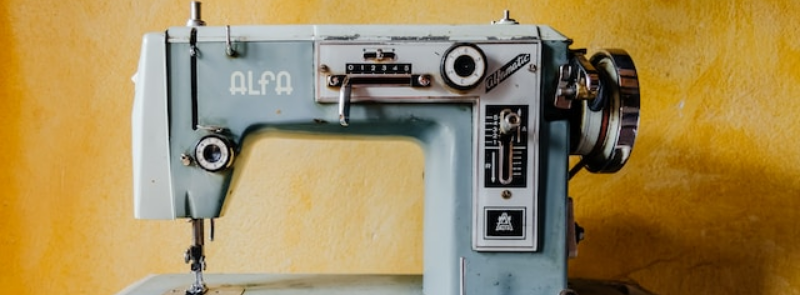
When It Occurs
Every June 13th
Timeline
Days Passed (884)
# Hashtags
#NationalSewingMachineDay #SewingMachine
National Sewing Machine Day is celebrated annually on June 13th and sometimes also on September 10th in the United States. This day honors the invention and significance of the sewing machine, an essential tool that revolutionized the textile industry and continues to be a fundamental device in both home sewing and commercial garment production.
Historical Background
The development of the sewing machine marked a major shift in the way clothing and textiles were produced. Before its invention, all sewing was done by hand, which was time-consuming and labor-intensive.
-
Invention of the Sewing Machine: The first functional sewing machine was invented by Thomas Saint, an Englishman, in 1790. However, it wasn’t widely adopted, and it wasn’t until the mid-19th century that sewing machines began to gain popularity.
-
Elias Howe: In 1846, Elias Howe, an American inventor, patented the first practical sewing machine that had a needle with the eye at the point. Despite this groundbreaking invention, Howe initially struggled to commercialize his design.
-
Isaac Singer: Around the same time, Isaac Singer made significant improvements to Howe's machine, particularly by creating a machine that moved the needle up and down rather than side to side, and was powered by a foot treadle, which made sewing faster and easier. Singer’s company became the most well-known sewing machine brand in the world, and he is often credited with popularizing the device.
-
Legal Battle: Howe eventually sued Singer for patent infringement, and they settled the dispute, leading Howe to earn royalties from every sewing machine sold by Singer. This legal victory helped cement Howe’s place in history as one of the key inventors of the sewing machine.
Importance of the Sewing Machine
The sewing machine is more than just a tool; it transformed various industries and contributed significantly to both the economy and society. Some of its most important contributions include:
-
Industrial Revolution: The invention of the sewing machine was integral to the success of the Industrial Revolution. It dramatically increased productivity in the textile industry, enabling mass production of clothing and other fabric-based products.
-
Economic Empowerment: The sewing machine provided a means for people, especially women, to earn a living by making clothes and other items, both in factories and at home. It allowed people to produce clothing faster and more efficiently.
-
Home Sewing: For many families, the sewing machine was a household staple. It allowed people to repair, alter, and make their own clothes, contributing to self-sufficiency and creativity.
-
Fashion Industry: The sewing machine played a critical role in the development of the fashion industry. Designers could now experiment with more complex and detailed designs, knowing they could be produced quickly and consistently.
How to Celebrate National Sewing Machine Day
-
Learn How to Sew: Whether you’re a beginner or someone who’s sewn for years, this day is a great opportunity to improve your skills. You can take a sewing class, watch online tutorials, or simply experiment with different sewing techniques.
-
Make a Project: Use your sewing machine to create something new! Whether it’s a piece of clothing, a quilt, or a set of curtains, the possibilities are endless. National Sewing Machine Day is a perfect occasion to complete a project you’ve been putting off or start a new one.
-
Host a Sewing Party: Invite friends or family members to celebrate the day by having a group sewing session. Share tips, techniques, and ideas, and enjoy the communal aspect of this traditionally solitary activity.
-
Learn About the History: Take time to read up on the history of the sewing machine and the inventors who helped bring it to life. You could even visit a museum or collection that includes antique sewing machines and related artifacts.
-
Support Local Sewing Shops: Many small businesses specialize in sewing supplies, fabrics, and sewing machine repairs. Supporting these shops on National Sewing Machine Day is a great way to keep the sewing community vibrant and thriving.
-
Donate a Sewing Machine: If you have a sewing machine you no longer use, consider donating it to a charity or community group that can put it to good use. Sewing machines can empower people to create their own clothes and even start small businesses.
Fun Facts About Sewing Machines
-
Singer’s Success: Isaac Singer’s sewing machines were the first to be mass-produced and marketed to both the commercial and domestic sectors. His company became a leader in the industry, and Singer sewing machines are still popular today.
-
Oldest Running Sewing Machine: Some early sewing machines, built in the 19th century, are still operational today and are often used by collectors and sewing enthusiasts.
-
Quilting Boom: The sewing machine played a major role in the popularity of quilting in the U.S. Quilts made with sewing machines became popular because they were faster to produce than hand-stitched ones.
-
Treadle Machines: Early sewing machines were powered by foot treadles. Although electric machines are now the norm, treadle machines are still prized by some people for their simplicity, and they don’t require electricity to operate.
The Sewing Machine in Popular Culture
Sewing machines, particularly antique models, often evoke nostalgia and have become symbols of creativity and craftsmanship. They have been featured in various forms of art, literature, and film, celebrating their long-standing place in culture and history. Collectors often value vintage and antique sewing machines, and they are commonly found in decorative displays or repurposed in various ways.
The Importance of Maintaining Your Sewing Machine
Sewing machines require regular maintenance to keep them running smoothly:
- Cleaning: Removing lint and debris after each use prevents the buildup of dust, which can interfere with the machine’s mechanics.
- Oiling: Regular oiling is necessary for machines with metal parts to reduce friction and prevent wear.
- Tuning: Occasional professional servicing or tuning ensures that the machine is aligned and operating correctly, which helps extend its life.
Conclusion
National Sewing Machine Day on June 13th (and sometimes observed on September 10th) is a day to appreciate the incredible invention that has had a lasting impact on the fashion industry, household management, and personal creativity. Whether you’re using a sewing machine to make your own clothes, create home décor, or repair fabric items, this day serves as a reminder of how the sewing machine has revolutionized our lives. Celebrate by sewing something new, learning more about its history, or sharing your love for sewing with others!


